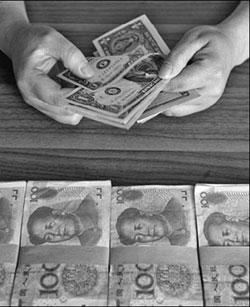BEIJING - Chinese banks have increased lending to support western regions, small enterprises, the agriculture sector and individual consumption, as the country tries to rebalance its economy.
The loans extended to the economically underdeveloped western regions grew by 29.6 percent by the end of March, according to latest statistics released by the People's Bank of China, the central bank. That was 5.8 percentage points higher than the lending growth for the more prosperous eastern regions.
"We have encouraged financial institutions to lend more to areas that are crucial for the national economy or those that are yet to receive adequate credit support, such as agriculture and small- and medium-sized enterprises," said Zhang Tao, director general of the statistics and analysis department at the central bank.
Loans for agriculture-related areas amounted to 8.2 trillion yuan ($1.2 trillion) by the end of March, up by 34.6 percent from a year earlier, the central bank said.
Growth of loans for small enterprises reached 23.9 percent by the end of March, compared with 17.4 percent growth for large enterprises.
Yuan-denominated lending for individual consumption at the end of March rose 57 percent from a year earlier, compared with a year-on-year growth of 48.6 percent at the end of last year, the central bank said.
As its economy expands rapidly even during the global financial crisis, China has tried to shift the focus of growth from traditional industries to more environment-friendly, consumption-driven sectors and those that are conducive for long-term sustainable growth, such as agriculture.

New lending in March came in lower than expected at 510.7 billion yuan, down from 700 billion yuan in February and 1.4 trillion yuan in January. SUN HAI / FOR CHINA DAILY
"Although the overall lending has moderated in March, we have encouraged more lending to the above-mentioned areas," said Zhang.
China's new lending in March came in lower than expected at 510.7 billion yuan, down from 700 billion yuan in February and 1.4 trillion in January.
"The moderation suggests that banks' impetus for lending has been curtailed amid the likely intensive window guidance on bank lending exercised by the authorities," said a Barclays Capital report released last week.
"The slowdown in nominal credit growth and the even sharper slowdown in real credit growth given the pick-up in inflation suggest that monetary conditions have tightened considerably," it said.
Last year, new yuan loans hit 9.6 trillion yuan, almost double that of 2008, which has been seen as a source of potential high inflation this year. But analysts said the lending spree of last year is not the only reason for tightening of credit this year.
Home prices, which have been surging since the second half of last year, may also have prompted policymakers to get more cautious, analysts said. The central government has issued a slew of measures to curb speculative home purchases and other real estate-related irregularities.
The central bank statistics show that new yuan loans for the real estate sector reached 845.7 billion yuan in the first three months, with outstanding loans for the sector increasing 44.3 percent compared with a year ago. It was 6.2 percentage points higher than that at the end of last year.
New loans for individual home purchases increased by 53.4 percent year-on-year by the end of March, 10.3 percentage points higher than that at the end of last year.





